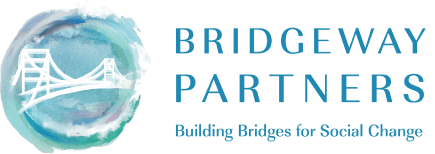We have recently been working to help leaders think systemically about reducing poverty in a variety of communities ranging from a rural region of 175,000 people to a metropolitan area of over 1,000,000. The nonprofit service providers in these areas express a similar concern, “Although our work is connected, we are not connected to each other.” The failure to connect providers costs these communities in several ways: money wasted on duplicate efforts, gaps in services, and a broken support system for the people who need it most.
What are the underlying causes of this failure to collaborate? And, what can communities do to facilitate more effective collaboration among service providers using the principles and tools of applied systems thinking?
Clarifying Why We Are Not Connected
Communities committed to such values as poverty reduction, K-12 education, and health care for all tend to have a shared aspiration. Their aspirations constitute noble values which most people have in common. However, they are challenged in aligning around a shared direction by difficulties agreeing on shared goals and metrics. As one nonprofit service provider observed, “We all serve different masters.” These “masters” are the different funders which support these organizations and often orient their goals and metrics to higher level agendas that do not necessarily align with the needs of particular communities.
Even local funders such as community foundations like to fund organizational programs rather than system-wide interventions. A commonly espoused mission of helping people thrive tends to devolve into an unspoken effort to help both providers and recipients survive in the face of numerous obstacles. I use the metaphor of ‘treading water’: rescuers throw out multiple life rafts to help people stay afloat rather than coordinate their efforts to help them swim ashore.
Communities also find it difficult to connect around a shared understanding of current reality:
-
Each organization sees reality based on its own particular concerns, goals, metrics, and funding sources.
-
Everyone sees how they are part of the solution – not part of the problem. As a result individual organizations work hard to get more funding for what they are already doing. By contrast they fail to acknowledge that they are all part of a dysfunctional system which can only be improved by improving the relationships among them.
People’s tendency to focus on their own organizational programs undermines their ability to create a continuum of client support. Going it alone:
-
Diverts resources that would otherwise go to collaborative efforts – such as funding system-wide priorities and a backbone organization to help implement them
-
Creates gaps, failed handoffs, and confusing duplication along what should be a smooth continuum of support
-
Perpetuates mistrust and competition among providers instead of collaboration
What You Can Do to Improve Collaboration
There are several things you can do to improve collaboration in your community.
1. Identify and affirm your shared aspirations. Focus on your collective commitment to help people thrive – not just survive.
2. Uncover the dynamics that get in your way. This means first understanding the complex interdependencies across issues that most organizations tend to deal with independently, e.g. housing and neighborhood safety, family stability, K-12 performance, and the creation of sustainable living wage jobs. It then means clarifying how failing to manage these interdependencies undermines the effectiveness of all stakeholders.
3. Identify leverage points and an approach to implementing them.
- Recognize that lasting system-wide performance improvement results from a few key coordinated changes sequenced and sustained over time
- Identify these leverage points based on a systems analysis of the underlying dynamics and input from people who are the ultimate intended beneficiaries of the change[i]
- Create a systemic theory of change that integrates these leverage points over time
- Develop a community-funded infrastructure to manage implementation of this strategy – including shared goals, metrics, milestones, and accountabilities
- In parallel with developing this infrastructure, encourage nonprofit service providers to do what they do best in relation to other local providers, and to either create partnerships or simplify their portfolios to fulfill the rest of their mission
Once providers understand why they are not connected even though their work is interdependent, they can begin to collaborate more effectively to enhance everyone’s contributions and leverage their limited resources. Not only will their work be more aligned, but they will feel more connected as well. And the people they serve will be able to thrive – not just survive.
[i] See David Peter Stroh, Systems Thinking for Social Change, Chelsea Green 2015 for a practical guide to conducting a systems analysis, identify leverage points, and create an integrated theory of change
